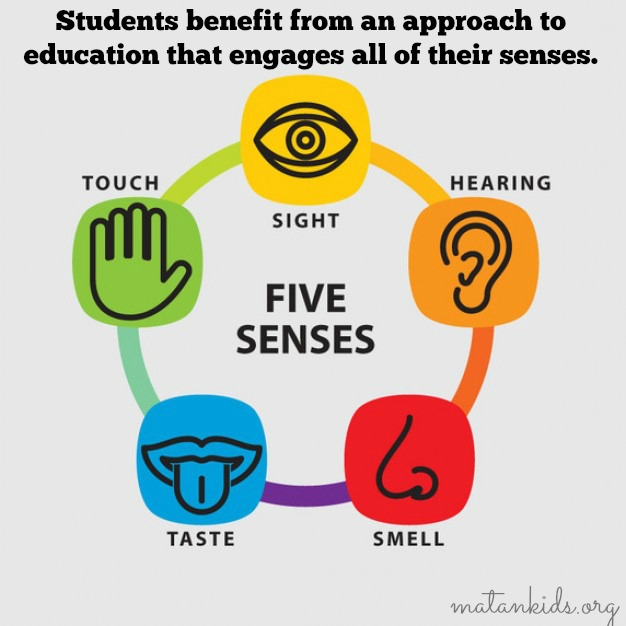 When children are small, they instinctively learn about our world through their senses. Stimulating the senses sends signals to the brain and strengthens the neural pathways for learning. And yet, once a child enters school, he or she is often expected to rely most heavily on hearing and seeing as a means to acquire new information. Even when we know that there is significant value in engaging students through all of their senses, true multi-sensory education tends to be an area that is ignored once children leave preschool.
When children are small, they instinctively learn about our world through their senses. Stimulating the senses sends signals to the brain and strengthens the neural pathways for learning. And yet, once a child enters school, he or she is often expected to rely most heavily on hearing and seeing as a means to acquire new information. Even when we know that there is significant value in engaging students through all of their senses, true multi-sensory education tends to be an area that is ignored once children leave preschool.
All students benefit from an approach to education that engages all of their senses. Some learn best by listening; some need to write something down to commit it to memory and others don’t remember well unless they repeat it back out loud. Students benefit from connecting their learning to a smell, a taste or the way something feels. Utilizing multiple modalities will increase the likelihood that learning can be meaningful, relevant and lasting.
But what happens when you plan the “perfect” multi-sensory lesson and the multiple stimuli are too much for one or more of your students? How do we find the right balance between engaging all of the senses and sensory overload?
 The truth is that we must know our students and recognize when they are approaching their limits. We need to be aware and sensitive, acknowledging that sensory issues are real. Often sensory issues can be shrugged off as “not real” or as behavior issues that a child can control. However, it is estimated that 5-10 percent of the population suffers from sensory imbalance with such issues frequently co-existing with anxiety disorders and Autism Spectrum Disorders. For these children, sensory sensitivities interfere with everyday activities. Basic sensory input may be felt in the extreme and they may experience significant sensitivity to noise, crowds, touch, textures, bright lights and bothersome clothing. Here is a good article with steps to reduce sensory overload.
The truth is that we must know our students and recognize when they are approaching their limits. We need to be aware and sensitive, acknowledging that sensory issues are real. Often sensory issues can be shrugged off as “not real” or as behavior issues that a child can control. However, it is estimated that 5-10 percent of the population suffers from sensory imbalance with such issues frequently co-existing with anxiety disorders and Autism Spectrum Disorders. For these children, sensory sensitivities interfere with everyday activities. Basic sensory input may be felt in the extreme and they may experience significant sensitivity to noise, crowds, touch, textures, bright lights and bothersome clothing. Here is a good article with steps to reduce sensory overload.
In the end, we need to find balance in our teaching just as we encourage our students and families to find balance in their lives. We will be our most successful, our most inclusive, when we teach in ways that engage the senses while remaining sensitive to the wide range of challenges our children may face.
 Lisa Friedman is Matan’s Manager of Social Media and Alumni Networks. She is also an Education Director at a Reform congregation in Central New Jersey where she oversees the synagogue’s and religious school’s inclusive practice.
Lisa Friedman is Matan’s Manager of Social Media and Alumni Networks. She is also an Education Director at a Reform congregation in Central New Jersey where she oversees the synagogue’s and religious school’s inclusive practice.
